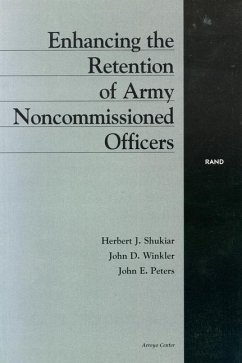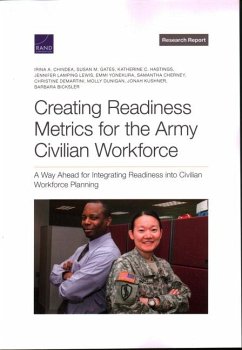
Characterizing the Future Defense Workforce
Versandkostenfrei!
Versandfertig in über 4 Wochen
15,99 €
inkl. MwSt.

PAYBACK Punkte
8 °P sammeln!
During the 1990s, questions arose about how future changes in military missions, organizations, and technology would affect work and workers in the Department of Defense (DoD). To address these questions, RAND undertook analysis of the effects of the future environment on the characteristics of DoD work and workers. Using the Department of Labors Occupational Information Network (O*NET) and teh O*NET Analyst Database, military and civilian ocupational analysts assigned new ratings scores to O*NET occupational dimensions, predicated on a general description of the future DoD environment derived...
During the 1990s, questions arose about how future changes in military missions, organizations, and technology would affect work and workers in the Department of Defense (DoD). To address these questions, RAND undertook analysis of the effects of the future environment on the characteristics of DoD work and workers. Using the Department of Labors Occupational Information Network (O*NET) and teh O*NET Analyst Database, military and civilian ocupational analysts assigned new ratings scores to O*NET occupational dimensions, predicated on a general description of the future DoD environment derived primarily from Joint Vision 2010 and related documents. RAND then analyzed the differences between future and past scores. Despite the many changes anticipated in DoD processes, relatively few characteristics are expected to change. Given existing selection and training processes, current and prospective workforces should be able to adapt to the expected changes, which separate into four broad themes:












